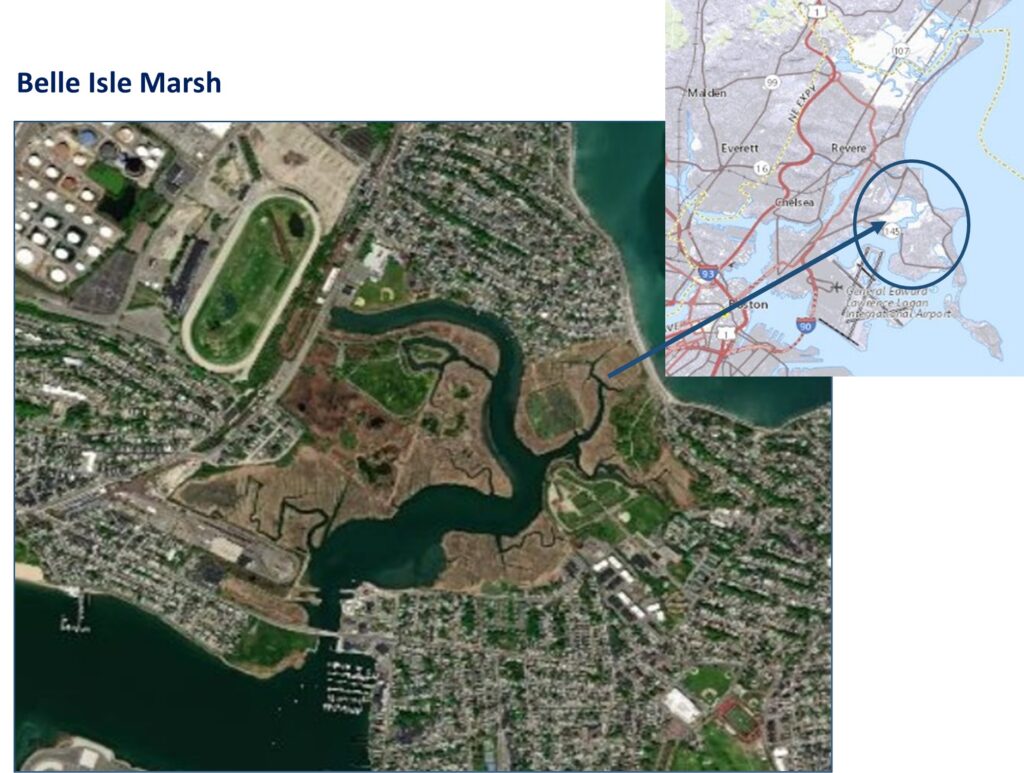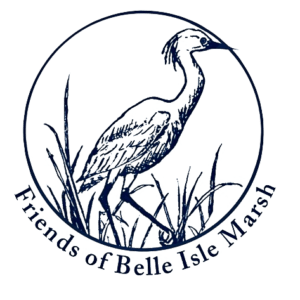Land Acknowledgement
The land of East Boston and Belle Isle Marsh is the traditional unceded territory of the Massachusett people, which gave its name to the Commonwealth of Massachusetts. The Massachusett lived on land that stretched approximately from Scituate (South Shore) to Cape Ann (North Shore) and west to Concord, including Totant (City of Boston). The Tribe was matriarchal where women owned and tended the planting fields and has an oral tradition of storytelling that passes on their world view and exemplary relationship with nature. We acknowledge the Massachusett as the traditional stewards of this land and the painful history of genocide and forced occupation through colonialism and dispossession of their territory. We aim to learn from these tragic errors and help nurture the land, as they have done from the start.
Belle Isle Marsh
Belle Isle Marsh is one of the last remaining salt marshes within Boston Harbor. “It is one of the most biologically significant habitats in Boston.” US Fish & Wildlife Service.


Belle Isle Marsh is the only remaining natural salt marshes within the City of Boston. A salt marsh is a low-lying, coastal area that mostly comprised of native plants and grasses, which is flooded by ocean tides daily. The 359-acre Marsh is nestled between the urbanized cities of Boston and Revere, and the suburban Town of Winthrop (as shown on the locus and aerial maps).
Salt marsh systems such as Belle Isle Marsh serve as natural buffers to climate change impacts by absorbing floodwaters and waves during coastal storms, which are becoming increasingly more intense and frequent due to sea level rise and erratic weather patterns. Salt marsh grasses also sequester (bind) carbon particles from emissions, and then store it indefinitely within its soil. The Marsh also provides other essential ecosystem services including wildlife habitat for over 271 species of birds (several threatened or endangered), and open space areas for community members.
Belle Isle Marsh is the only remaining natural salt marshes within the City of Boston. A salt marsh is a low-lying, coastal area that mostly comprised of native plants and grasses, which is flooded by ocean tides daily. The 359-acre Marsh is nestled between the urbanized cities of Boston and Revere, and the suburban Town of Winthrop (as shown on the locus and aerial maps).
Salt marsh systems such as Belle Isle Marsh serve as natural buffers to climate change impacts by absorbing floodwaters and waves during coastal storms, which are becoming increasingly more intense and frequent due to sea level rise and erratic weather patterns. Salt marsh grasses also sequester (bind) carbon particles from emissions, and then store it indefinitely within its soil. The Marsh also provides other essential ecosystem services including wildlife habitat for over 271 species of birds (several threatened or endangered), and open space areas for community members.
Belle Isle Marsh is the only remaining natural salt marshes within the City of Boston. A salt marsh is a low-lying, coastal area that mostly comprised of native plants and grasses, which is flooded by ocean tides daily. The 359-acre Marsh is nestled between the urbanized cities of Boston and Revere, and the suburban Town of Winthrop (as shown on the locus and aerial maps).
Salt marsh systems such as Belle Isle Marsh serve as natural buffers to climate change impacts by absorbing floodwaters and waves during coastal storms, which are becoming increasingly more intense and frequent due to sea level rise and erratic weather patterns. Salt marsh grasses also sequester (bind) carbon particles from emissions, and then store it indefinitely within its soil. The Marsh also provides other essential ecosystem services including wildlife habitat for over 271 species of birds (several threatened or endangered), and open space areas for community members.

Friends of Belle Isle Marsh
Friends of Belle Isle Marsh is a grassroots organization who originally came together in the 1980’s to protect the salt marsh and abutting uplands from toxic industrial use and development, and instead work towards conservation and non-intrusive recreation. We aim to protect nature that protects us from storms and sea-level rise, serves as a much-needed respite for migrating birds and as a habitat for many species including some on the endangered species list, and provides a beautiful and rare open green space to relax in. FBIM members find meaning in connecting with nature, and we welcome youth, teachers, nature lovers, bird lovers, environmentalists, and particularly, people of less privilege who are more adversely affected by environmental crises, including climate change.
